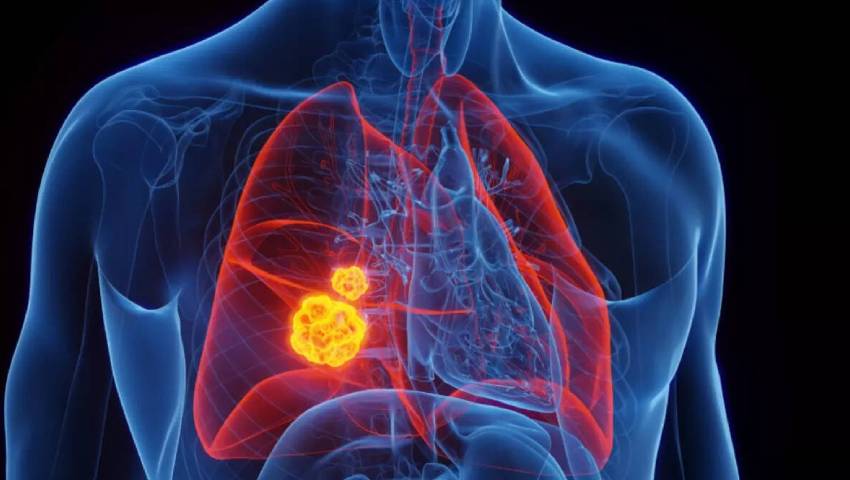Every year, Lung Cancer Awareness Month reminds us how important early detection and timely treatment can be. Lung cancer remains one of the leading causes of cancer deaths worldwide, yet many patients recover well when treated at the right time. One of the most effective treatments for early-stage lung cancer is surgery. But how do doctors decide when surgery becomes necessary? Let’s understand this in detail.
In This Blog, You’ll Learn:
- When is surgery needed for lung cancer?
- Different types of lung cancer surgery
- What affects the decision for surgery?
- Recovery and outcomes after lung cancer surgery
What Is Lung Cancer and Surgery’s Role?
Lung cancer occurs when abnormal cells grow uncontrollably in the lungs. It can affect one or both lungs and is broadly divided into Non-Small Cell Lung Cancer (NSCLC) and Small Cell Lung Cancer (SCLC).
Surgery plays a key role, especially for early-stage lung cancer. In such cases, removing the tumor through surgery can offer the best chance for long-term survival. At this stage, cancer is still confined to the lungs and has not spread to distant organs.
Dr. Lalit Banswal, the best lung cancer surgeon in Pune, provides advanced surgical care using minimally invasive and robotic techniques to ensure faster recovery and better outcomes.
When Does Surgery Become Necessary for Lung Cancer?
Surgery becomes a key treatment option when the cancer is still at an early and controllable stage. It offers the best chance to completely remove the tumor and prevent its spread.
- Early-stage non-small cell lung cancer (NSCLC): Surgery is the main treatment when the cancer is confined to one part of the lung. Removing the affected section can often lead to long-term survival or cure.
- Very early small cell lung cancer (SCLC): Though rare, surgery may be advised for highly localized cases, followed by chemotherapy or radiation to prevent recurrence.
- Recurrent lung cancer: If cancer returns after previous treatments and remains confined, surgery can help remove the new growth and improve outcomes.
- Suspicious lung nodules: Sometimes, a lung nodule that looks abnormal on scans may be surgically removed to confirm if it’s cancerous. This approach allows doctors to diagnose and treat the issue at the same time.
In short, surgery for lung cancer is recommended when removing the tumor completely can provide the best chance for recovery and a cancer-free life.
Factors That Influence the Decision for Surgery:
Several factors help doctors decide the right time for surgery for lung cancer in Pune, including:
- Type of cancer (NSCLC or SCLC)
- Tumor size and location within the lungs
- Spread to lymph nodes or nearby organs.
- Patient’s age and overall health
- Lung function tests to ensure the remaining lung can support breathing post-surgery
Dr. Lalit Banswal, a trusted lung cancer doctor in Pune, carefully evaluates each case to recommend the safest and most effective approach for his patients.
Types of Lung Cancer Surgery:
There are several types of lung cancer surgery depending on how much of the lung needs removal:
- Wedge Resection or Segmentectomy – Removes a small portion of the lung containing the tumor.
- Lobectomy – Removes one lobe of the lung; it is the most common surgery for early-stage lung cancer surgery options.
- Pneumonectomy – Removes an entire lung when the cancer is extensive but still operable.
- Video-Assisted Thoracoscopic Surgery (VATS) – A minimally invasive technique with smaller cuts and quicker healing.
- Robotic Lung Surgery – Offers precision, reduced pain, and faster recovery, now available in pune.
Risks and Recovery When Surgery is Done?
Common Risks of Lung Surgery:
- Infection or bleeding: Like any major surgery, there’s a small chance of infection or internal bleeding.
- Breathing difficulties: Temporary shortness of breath may occur as the lungs heal.
- Pain or discomfort: Some chest pain or stiffness is normal after surgery, but it improves with proper medication.
- Air leakage: In a few cases, air may leak from the lung into the chest cavity, which is usually managed with drainage tubes.
Recovery After Surgery:
- Hospital stay: Most patients stay in the hospital for a few days for monitoring and pain management.
- Return to normal activities: Generally, recovery takes about 4–6 weeks, depending on the type of surgery and the patient’s health.
- Rehabilitation support: Breathing exercises and physiotherapy play an important role in improving lung strength and function.
- Follow-up care: Regular check-ups ensure proper healing and help detect any recurrence early.
Dr. Lalit Banswal and his team provide expert post-surgical care for lung cancer treatment in Pune, ensuring patients recover safely and comfortably.
When Surgery Might Not Be the Best Choice?
Surgery may not be suitable if:
- Cancer has spread widely (metastatic stage).
- The patient’s lung capacity or heart function is poor.
- There are multiple tumors that can’t be safely removed.
In such cases, chemotherapy, radiation therapy, or targeted therapy may be better options. A multidisciplinary approach helps personalize treatment for every patient.
Conclusion:
During Lung Cancer Awareness Month, it’s crucial to remember that early detection can save lives. Surgery remains one of the most effective treatments when done at the right stage.
If you’re looking for expert guidance or lung cancer surgery in Pune, consult Dr. Lalit Banswal, the best lung cancer surgeon in Pune. His team offers advanced, compassionate, and precise care — ensuring the best cancer treatment in Pune for every patient.

